

A temporary booking?
Cambridge Library is bursting at the seams but a vacant building may offer the community hub space the public have been calling for, writes Mary Anne Gill.

A solution for Cambridge Library’s space woes may lie in the very building Waipā District Council was gazumped from buying three years ago.
Ingham Motors acquired the site in 2022 with plans to develop a high-end car dealership.
However, due to current economic conditions, those plans are now on hold.
The News understands that a group outside the council is in discussions with dealer principal John Ingham about moving parts of the library’s operations temporarily into the vacant building.
The talks come as new figures show a surge in Cambridge Library’s usage for the year ended June 30. Book issues rose by 24,097 – nearly eight per cent - to 328,911.
Te Awamutu Library, twice the
size of Cambridge, saw a 3.5% increase to 172,023.
Visitor numbers also climbed:
Cambridge was up 5.3% to 84,594, while Te Awamutu rose 3.3% to 86,829.
Cambridge Community Board chair Jo Davies-Colley said the growth was no surprise to her and reinforced the board’s three-year campaign for a larger facility.
“The library is busier than ever and making a real difference in our community.”
Due to overcrowding, books are now being stored on the floor. The library, which opened in August 1998 and was designed to serve the community for 50 years, is no longer adequate for Cambridge’s growing population.
“The community board has strongly supported the need for a new library, or at the very least,


alternative solutions that don’t require a huge investment,” said Davies-Colley who recently urged the council during Long Term Plan hearings to think of innovative solutions.
“It’s simply not acceptable for our most-used community service to be operating with books lined up on the floor. The library deserves better and I’d like to see council make the library a priority.”
Mayor Susan O’Regan said any discussions with Ingham about the high-profile site would have to consider the council’s financial situation.
“It’s no secret our debt headroom is a limiting factor in terms of anything we can do for the next five years.”
But that did not rule out the possibility of looking at other

options.
“He’s welcome to come and have a chat.”
Ingham confirmed that while he had spent $37,000 securing building consents for the 2000-square-metre freehold section and two leasehold portions, development was paused.
“We were all ready to push the button and then we said the economy was not strong enough and the motor industry was not strong enough.”
Ingham Motors, which began in 1986 and now operates multiple dealerships across the upper North Island, also purchased Windsor Nissan in Cambridge last year.
“We thought it (the economy) would have come right by now but there’s no decision as of today on what’s happening there (in Cambridge).”


Currently, the former Bunnings building is being used to store used cars. Ingham said he was open to community ideas.
“I’m open to discussions to talk to anybody about anything. I said right at the start if I don’t eventually build a car dealership on there, the first people I would go back to would be the council to see if they’re interested in their library.
“We’re community people, small town people, and we’ve got a presence in the town and we have to be seen doing what is right for the town,” he said.
O’Regan said the issues facing Ingham Motors were the same as Waipā District Council.
“We’re in a similar constrained financial environment. The one he’s operating in is the same one that we’re operating in.”





Space at Cambridge Library is at a premium.
Photo: Mary Anne Gill
The old Bunnings building, currently used to store used cars, sits largely empty.
Photo: Mary Anne Gill










Fergus is Cairo bound
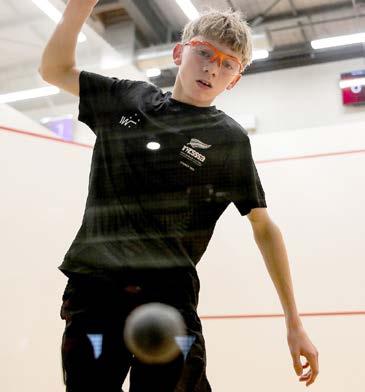
Waipā squash talent Fergus Hill has been added to the touring squad to represent New Zealand in the junior world champs.
The Year-12 Hamilton Boys High student was originally named as a reserve but a rule change announced by the World Squash Federation has opened the door for him to represent his country.
Hill, 16 and a member of the Te Awamutu Squash Club will travel to Cairo, Egypt as part of the New Zealand junior boys team for the July 21-August 1 series.
The World Squash Federation had reduced team sizes from six to



News/Editorial
027
Advertising
Janine
Owner/Publisher

Roy Pilott editor@goodlocal.nz
maryanne@goodlocal.nz
viv@goodlocal.nz
chris@goodlocal.nz
janine@goodlocal.nz
David Mackenzie david@goodlocal.nz
admin@goodlocal.nz •
The rain and fog have certainly arrived in Cambridge in the past week.
With school now back for term three, the amount of traffic on the roads has resumed to normal higher levels. In addition, the number of cycling commuters, both children and adults, has increased.
Cars and cyclists can become almost invisible in the fog to drivers who do not have lights illuminated – and they risk being involved in or causing a crash. In addition, when roads are slick it is important that motorists adjust their driving behaviour to match the conditions. Within the 7 days prior to writing, police attended three crashes where this does not appear to have happened. In addition, staff apprehended two drivers who had further impaired capabilities due to having consumed alcohol at levels that left them over the legal limit to drive.
Police have long issued road safety messaging around ‘be safe, be seen’. This is especially vital in winter. Make it a practice to turn headlights on manually. Headlights used in any weather situation will always increase your visibility to other motorists. If you or your child are cycling to work or school, now is the time to ensure you have

front and back bike lights and high visibility clothing, a fluoro school bag cover or similar. This is in addition to always wearing a bicycle helmet. Everyone should be aware of their surroundings and the actions of those road users around them. Leaving a safe distance between you and the vehicle in front can enable you to safely respond to unexpected braking, stopping short of other vehicles and preventing nose to tail crashes.
Police also deal with reports of road rage. Often these occur due to drivers failing to give way or merge safely or knowingly impeding other traffic. Such incidents can quickly escalate to threats and violence.
New Zealand road rules say that a vehicle turning gives way to those that aren’t turning. This includes giving way to cyclists travelling straight ahead in dedicated cycle lanes.
At roundabouts, give way to traffic coming from your right. If you are taking the first left hand exit, signal left when entering. If you are travelling straight through, you should not indicate on to the roundabout, rather only indicate left when about to exit. If you are turning right at a roundabout, indicate right as you go on to the roundabout and left when you are about to exit.
four for the tournament – but changed its mind the day after the New Zealand team was announced.
This unexpected update prompted selectors to reconvene and expand the team, paving the way Hill and Te Puke’s Jack Lord to be included in the travelling team.
“Fergus’s inclusion comes as no surprise for our local squash community, given the dedication, determination and accomplishments that he has already achieved in what is a truly incredible junior career,” Te Awamutu club publicity officers Bronwyn Brier said.
Having grown up on court, after picking up a squash racket as young child, alongside his other sporting loves of cricket and rugby, Fergus has quickly risen through the ranks with a cheeky and engaging style of squash play. This dedication and commitment to the sport saw Fergus, earlier this year, attaining the elite A2 grade – an exceptional accomplishment for someone just 16 years old.
Squash runs deep in Hill family. His great-grandfather Raymond Bowers was one of the founding members of the Te Awamutu Squash Club in the early 1960s. His grandparents Glenice and John Hill, his parents Scott and Rebecca Hill, and older brother Connor have all played the sport competitively.
Notably, Connor was also a member of the New Zealand Junior Boys Team that competed at the 2023 World Championships in Melbourne and has been a great mentor and competitive rival for Fergus as they have both risen through the junior ranks.

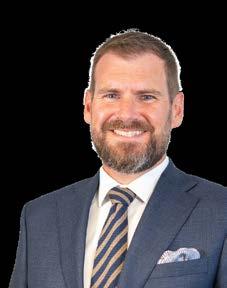








with Senior Constable DEB HANN
Fergus Hill in action. Photo: Dave Lintott Photography
Birthday teed up
Cambridge Golf Club will celebrate its 125th anniversary over two days later this year and is recognising past members of the club who have represented the province and country. Cambridge is Waikato’s oldest golf club, established in 1900 and on the current site since 1924.
Board appointment
Waikato broadcaster Karyn Fenton-Ellis has been appointed to the Board of the Broadcasting Standards Authority, an independent Crown entity that receives and determines complaints from people dissatisfied with the outcome of complaints made to broadcasters about the standards on television and radio.
In the running
Ahu Ake – Waipā Community Spatial Plan has been named a finalist in the Local Government NZ SuperLocal Awards announced tonight (Thursday). The plan is in the SuperEngaged – Tū Hononga Award category, which celebrates councils that use creative ways to involve their communities, including voices that are not always heard from. The approach included a ‘World Cafe’ and saw staff and elected members take to the road, visiting 11 towns and villages across the district.
Drug bust
Police found cocaine, cash and a pump action shotgun during raids in Cambridge and Matamata last week.
About 85 grams of cocaine and $20,000 in cash was found at the Cambridge address. The shotgun and a half-kilo bag and five 30g bags of cocaine were located in Matamata. A 39-year-old man is due to re-appear in the Hamilton District Court on July 28, facing drug and firearms charges and others are expected to be charged.
Merger calls grow
By Mary Anne Gill
It’s a tale of two councils –Waipā and Waitomo. One ranks third-highest in the country for rate increases at 15.5 per cent, while the other sits near the bottom at just 2.91 per cent.
The stark contrast in performance has prompted calls from groups like the Taxpayers’ Union and the Waikato Chamber of Commerce for council amalgamations to spread costs and keep rates in check.
Waikato Chamber chief executive Don Good said the 20-44 per cent increases “beggars belief” and would significantly affect voter sentiment in the upcoming local body elections.
Mayors Susan O’Regan (Waipā) and John Robertson (Waitomo), lead councils that have faced three years of unprecedented financial challenges, including high inflation, ageing infrastructure, water reforms and soaring debt.
Waipā has cut nearly $200 million of costs out of its
Long Term Plan in a bid to find savings.
But O’Regan says the issue goes beyond individual councils.
“It’s bigger than that, it’s looking at the whole of this sector and how it is structured and funded and where those shortcomings are,” said O’Regan.
“Anybody that promises rate suppression really fails to understand the situation we’re in as a sector and as a country around the need for infrastructure renewal.”
According to the Taxpayers’ Union, the average council rates increase across New Zealand for 2025 is 8.39 per cent, while Waipā’s three-year cumulative increase of 40.55 per cent is described as “staggering and unsustainable.”
Local Government campaigns manager Sam Warren said councils like Waipā, Hamilton and Waikato used growth as a smokescreen to justify excessive spending and pass the burden onto ratepayers.
“Councils are gaslighting
Rates on the rise
1: 2025-26 increases 2: 2022-25 cumulative increase
those already struggling to get by,” he said.
Robertson sees the upcoming water reforms as a catalyst for necessary mergers, particularly between Waitomo and Ōtorohanga.
“When we lose water, we lose 20-25 per cent of our business. You can’t keep the overheads.”
Waitomo, once one of the most debt-ridden councils in the country, is projected to have similar debt levels to Ōtorohanga, making amalgamation a practical necessity.
Robertson, a former member of Parliament, mayor of Papakura and local government commissioner acknowledged the government’s water reforms could be seen by some councils as “mergers by stealth.”
O’Regan said councils would need to reassess their situations next term.
Waipā is likely to transfer its drinking and wastewater infrastructure to a councilcontrolled organisation called Waikato Water Done Well comprising Ōtorohanga, Hauraki, South Waikato, Matamata-Piako and Waitomo.
“Water reform will prompt a lot of councils to consider what the future for local government of the rest of council looks like. If that’s not a discussion then you don’t understand what the position is in the sector,” said O’Regan.
“If you’re not prepared to contemplate what local government could look like going forward, you’re misunderstanding the memo.
“You have to look at how we can deliver better and more efficient, cost effective services to our community.”
She cited Waikato Regional Airport and Co Lab – a council-owned initiative to find shared opportunities - as successful examples of


collaboration.
“Waikato Water Done well in and of itself is an example of excellent inter district collaboration.
“I would like to think we would be mature enough to have a discussion about how the future of that representation and delivery of services could be created for our collective communities and at the same time not lose that local voice and expression and sense of place.”
Robertson said his council had “stripped back” costs to avoid insolvency, a situation that once led the Productivity Commission to label it the worst-performing council in the country.



Good said the performances of Waitomo and Waikato Regional Council – its 2025 increase is 5.7 per cent and 19.65 per cent over three years – were acceptable premiums for growth.
“Business accepts inflation increases but objects to paying two to three times inflation for the same service.
“Double or even triple above inflation means voters will vote with their wallets for more business like financially prudent candidates,” he said.
“It is time for accountability and real change. This is the year voters need to vote.”

Jono Gibson Funeral Director
Susan O’Regan
Don Good
Sam Warren
John Robertson










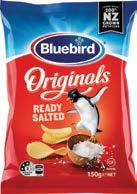
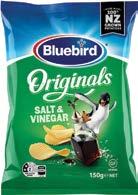


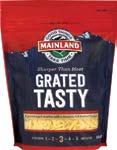





LGNZ goes eight down
By Mary Anne Gill
Waikato Regional Council has become the eighth council in two years to withdraw from Local Government New Zealand (LGNZ), the national advocacy body for local authorities.
As a consequence, chair Pamela Storey was not at the LGNZ annual conference which kicked off yesterday in Christchurch.
Waikato Regional Council voted 6–5 to exit LGNZ and save an annual $122,000 membership fee.
The councils follow in the footsteps of Auckland – on mayor Wayne Brown’s casting vote, Kaipara District, Christchurch City, the West Coast Regional, Grey District, Westland District and Western Bay of Plenty District councils.
Waikato Regional Council strategy and policy chair Warren Maher said LGNZ focussed too much on district issues and took a left-leaning approached that hindered cooperation with central government.
Representatives from Hamilton, Waipā, Hauraki, Waikato, Ōtorohanga, Matamata-Piako and
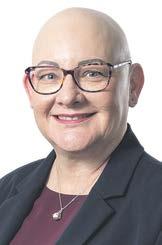
Waitomo were booked in for the conference this week.
Mayor Susan O’Regan told The News prior to the event that she would attend and participate in an electoral reform working group led by Nelson mayor Nick Smith.
Waipā chief executive Steph O’Sullivan was scheduled to present today (Thursday) on driving organisational performance.
Other attendees from Waipā are Māori ward representative Dale-Maree Morgan and Kihikihi councillor Marcus Gower. Members of the Ahu Ake Spatial Plan team will not be present for the Local
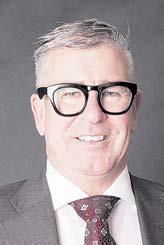
Government awards tonight despite being a finalist in the Super Engaged category for its World Café engagement initiative.
Ōtorohanga mayor Max Baxter and his deputy Annette Williams, who are both standing down at this year’s local government elections, chief executive Tanya Winter, and councillors Katrina Christison and Jaimee Tamaki were all attending the conference.
Waitomo mayor John Robertson said he and chief executive Ben Smit would be at the conference but no other elected members or staff.

“This is part of our costsaving exercise. Only one elected member to go to the conference,” said Robertson. Neither Waipā nor Waitomo elected members had formally discussed leaving LGNZ. However Robertson said he was concerned at the lack of engagement between central and local government.
“It’s not new,” the former MP for Papakura said. “I recall when we met with then prime minister Helen Clark. It was a terse relationship.”
Central and local government needed to work together but local decisions were best made locally, said

Robertson.
O’Regan said her council had not discussed whether to continue belonging to LGNZ.
“It’s not one we’ve had and neither will we have time between now and the elections.”
The conference this year was a “pared back” event reflecting current economic conditions but still featured a wide range of speakers and sessions.
The conference included a Women in Local Government breakfast yesterday followed by a speech via video from prime minister Christopher Luxon.
Local Government and

Resource Management Reform and Infrastructure ministers Simon Watt and Chris Bishop were to speak on powering the economy. Other break out sessions included what councils needed to know about Māori wards and constituencies, unlocking the Māori economy, the role of local government in the changing landscape and managing community facility projects.
Deputy prime minister David Seymour was to speak this morning before a session on driving efficiencies and productivity.
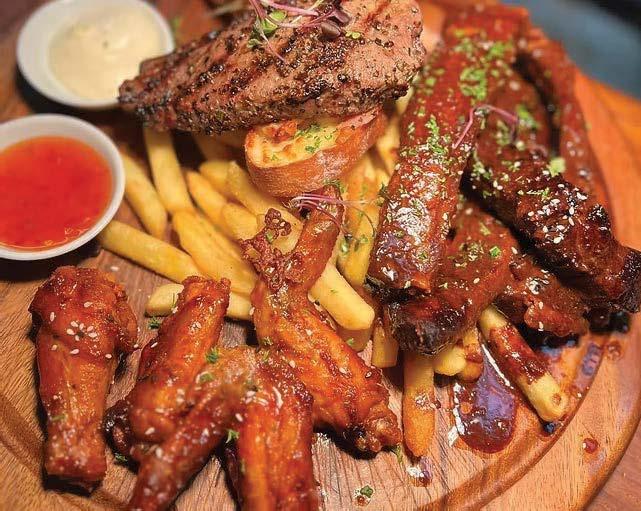

STALLIONS’ Gallops into Cambridge!
Once a charming Old English pub (PRINCE ALBERT) where tales flowed as freely as the ale—now reborn as STALLIONS, the boldest bar & grill in town! Experience the perfect blend of classic warmth and modern flair with live music on weekends, exclusive Senior Night special on every Monday for the age 50 and above enjoy 10% discount on the food, thrilling quiz nights on every Thursday evening, karaoke nights on every second Friday from 7pm onwards and a menu that fires up your taste buds like never before.
“Old
soul, new fire – that’s STALLIONS!
To make a booking give us a call on 07 827 7900 We are open 7 days a week from 10:30 am till late.

Pamela Storey
Max Baxter
Ben Smit
Steph O’Sullivan
Tanya Winter
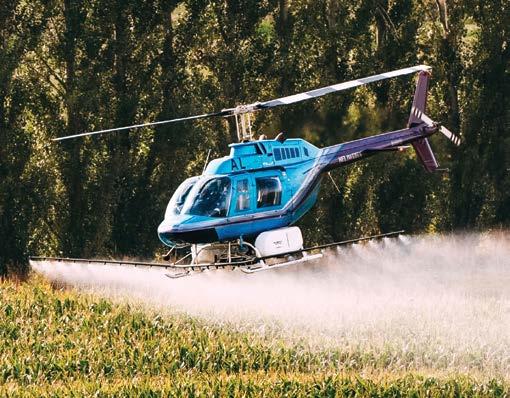
Sunday train date set
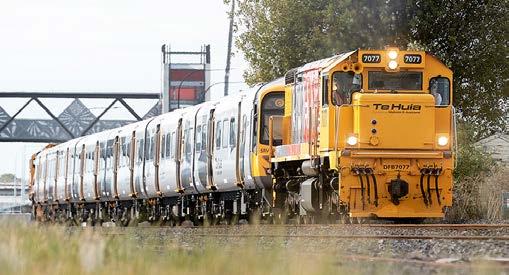
Approval has been given for the first Te Huia Sunday service between Waikato and Auckland stations.
The passenger service will leave Frankton on the afternoon of July 27 for a three and a half hour journey to central Auckland and the return journey will start early that evening.
A timetable plan for the Sunday afternoon service was approved by Auckland Metro in May.
Waikato Regional Council’s Regional Transport Connections Director Phil King said it was a “significant step forward for our Waikato to Auckland rail service as it enters the final year of its trial”.
“It will strengthen connectivity, support tourism, and make the service better for workers, students and families travelling between both regions. It will especially provide an alternative travel option to large sporting and cultural events and provide connection seven days a week to the
Auckland Airport.
He said it came in time for the council to assess its success ahead of a NZ Transport Agency decision early next year on the future of Te Huia.
KiwiRail’s Executive General Manager Passenger Tracey Goodall said patronage on Te Huia was growing and the service expanding.
Work upgrading the Auckland network would cause some delays.
“A final push to upgrade the rail network in Auckland is ongoing for the rest of this year and into 2026, ahead of the City Rail Link opening and at times KiwiRail’s Waikato maintenance teams will need more time working on the tracks between Hamilton and Pukekohe,” Goodall said. “This means occasional disruption to the Te Huia service, but we are trying to keep this to a minimum wherever possible, while still delivering the much-needed Auckland upgrade.”








Te Huia is entering the final year of its trial.
Sound advice from Nick
By Jon Rawlinson
Audiologist Nick Jones provided a most welcome message for parents when he visited Cambridge in a mobile clinic this week.
“Parents have a lot of fears and uncertainty if their child has hearing problems, including how they’re going to live in the real world when they’re older,” he told The News. “So, it’s great to be able to assure them that it’s all going to be fine and their children can go on to do anything they like.
He should know – he was diagnosed as profoundly deaf in his infancy, The now 33-year old was fitted with a Cochlear implant as an infant.
Now an audiologist for The Hearing House, he has been providing hearing checks through a mobile clinic in Cambridge and Ōtorohanga this week.
“Giving back what I was given, knowing that I’m making a big difference in people’s lives, is so rewarding.”
Launched in September, The Hearing House mobile unit is a purpose-built hearing lab on wheels.
“It’s like a campervan but inside it’s soundproofed, we have two clinicians and all the equipment we need including a testing booth. We can reach out to people who can’t make it up to Auckland.”
With internal and external components, Cochlear implants
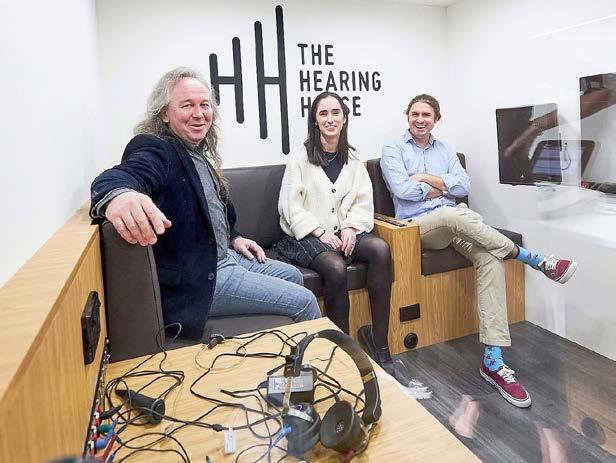
(CI) bypass parts of the inner ear, stimulating the auditory nerve with electrical signals. They improve hearing in most cases, Nick said.
“Sometimes they’re not recommended but if people are medically suitable then there’s no reason why not. Hearing can
improve significantly after an implant for 99 per cent of the people we see.”
Even with a CI, there are challenges.
“The CI has helped me, but it doesn’t mean my hearing is perfect – there are still instances when I struggle to hear, if there’s

background noise or a big group of people, for example,” Nick said.
But help is available.
“I was lucky to have one-onone support from Anna McKey, a teacher aide at Ōtorohanga South School. She’s a compassionate and intelligent lady who made sure I was up to speed with my learning.

Receiving her support throughout my early years was invaluable.”
Another Ōtorohanga South School teacher has been in Nick’s corner even longer. It’s his mum Barbara.
Initially, Nick’s family did not notice the warning signs, Barbara said.
“He was such a switched on kid, good at responding to visual and vibration cues, so we didn’t pick up on it at first. Then, John, my father-in-law, said he thought there might be something wrong –we’re so grateful to him for that.”
Implants can be fitted on children aged as young as six months. As the technology was new when Nick was diagnosed, Barbara was advised to wait and try communicating with her son using sign language first.
“When we started signing to him, it was like a dam broke. He was so eager to communicate, but I was like the interpreter between him and the world, so it wasn’t ideal.”
Aged three, Nick became one of the first children born deaf in New Zealand to receive an implant. Since then, Barbara said her son has been an inspiration.
“It’s made a huge difference in his life,” she said. “Having experienced the shock of being told my child had profound hearing loss, I know how reassuring Nick’s story and his work must be for other parents. I’m so proud of him.”


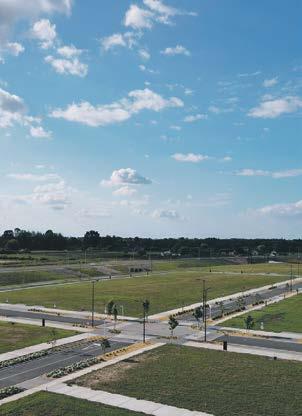




Inside The Hearing House mobile unit, from left, board member David Welch and audiologists Bri Putnam and Nick Jones

How much lava?
By Janine Krippner
When it comes to volcanic eruptions, people love numbers, especially big ones. The largest eruption in 20 years, the highest ash plume in our lifetime, the most terrifying pyroclastic flows - these make great headlines.
But behind these impressive figures lies a lot of careful work to measure, verify, and confirm what actually happened.
One measure of the size of an eruption is the Volcanic Explosivity Index (VEI). As soon as an eruption begins, estimates start circulating, often stated as fact. This looks at the amount of material that was erupted, and ash plume heights, so this is not calculated until an eruption has ended.
To calculate volume, how much magma was erupted in total, as well as the breakdown into ash (pulverized rock), lava flows, or pyroclastic flows, can be a bit tricky and generally takes a mix of field work, computing power, expertise, and time.
It is important to understand the eruption volumes of past events so that we can understand what future scenarios might look like. To explain how we calculate the volume of lava produced during an eruption, I am sitting in Tenerife with Sergio Alfaya, who is working with me at GeoTenerife. Sergio has calculated lava volumes for past eruptions across the island of Tenerife, as well as the 2021 La Palma eruption.
One challenge with lava flows compared to other volcanic processes is that it entirely buries the landscape. The La Palma lava flow field (made up of many individual lava flows erupted over the three-month period) reaches around 75-100 metres thick in places. To put that into perspective, the typical height of a room is about 2.5 metres high.

We have to “reconstruct” what the landscape looks like before the lava covered it. For recent eruptions we can compare before-and-after satellite data, but for older eruptions we don’t have that luxury. For those we have to rely on historical maps and imagery to build a mathematical model of the pre-eruption terrain.
We use satellite imagery and drone data to capture the surface detail of the lava flows. With these datasets, we can compute how much lava now buries the landscape.
The La Palma eruption is the first in the Canary Islands to have high-quality data from both before and after the eruption. Researchers like Sergio can use this to refine their volume calculations and validate or test their methods.
The final result? The La Palma lava flow measures approximately 177 million cubic meters (m³). If we think of a dump truck typically carrying 10-14 m3 per load, it would take about 14 million truckloads to move that much lava. For another comparison, building Auckland’s Sky Tower required around 15,000 m³ of concrete. La Palma’s lava flow field is more than 11,000 times that volume.
Understanding the lava flow volumes from past eruptions allows us to run simulations of eruptions across different locations to see where they would go, and what the impacts to communities would be. Each step, from data collection to computer modelling, takes careful consideration and testing so that our science can be used to inform decisions and protect lives.


Project had old school ties
By Jon Rawlinson
A new film centred on Hamilton’s Fairfield College has deep connections spanning the Waikato, Waipā and King Country.
Telling the story of Fairfield College, ‘Kukutaaruhe – Ngā Taonga Tuku Iho’ - treasures of the past - explores bonds between the school, the people and the land.
An advance screening was held at the college ahead of Matariki.
Film maker Robbie Neha, a former Fairfield College head boy and former board member based in Ōtorohanga has had more than 35 years’ experience in film and television.
“I always wanted to tell this story,” Neha said. “It’s about the school but also Ngāti Wairere. I was honoured when Richard contacted me.”
Principal Richard Crawford said he was inspired to contact Neha and historian Wiremu Puke after encountering cultural narratives in Alaska and Canada during a sabbatical.
“The school was opened in 1957, so I thought it was about time we put something on video to acknowledge the land where the school sits and especially to pay tribute to Ngāti Wairere, the mana whenua – it’s an acknowledgement of their narratives,” Crawford said.
“It’s a story about the school but also the land and where we hope to be in future by making it more sustainable, raising consciousness of this for our community.”
This message brings urban biodiversity and gully restoration initiative, The Fairfield Project, into frame.
The project has been responsible for planting more than 31,000 trees across the Kukutaaruhe Gully.

“The project featured quite strongly in the film – it’s an important part because it’s about the land and how we’re going to preserve it.”
The documentary will soon be accessible through the Fairfield College website.
Past and present students of the college feature on screen and behind the scenes. Puke and Neha, both Ngāti Wairere, were instrumental, Crawford said.
“Wiremu was critical in making sure what we were showing was culturally appropriate and accurate. It couldn’t have happened without him or without Robbie because of his ideas and production skills.”
‘Kukutaaruhe – Ngā Taonga Tuku Iho’ could encourage other schools to explore and share their history and ties to mana whenua on film.
“It certainly wasn’t my intention, but I
hope it does motivate others,” Neha said. There are many more schools across our towns and districts, so I certainly hope that there will be more.”
Neha has worked in numerous governance roles including as the Taarewaanga Marae representative on the Ōtorohanga Kiwi House Trust and as a committee member of the Pirongia Heritage and Information Centre.
Guests at the centre’s recent annual meeting heard Neha discuss filmmaking, whakapapa and history.
Neha is well known for his books and documentaries about the New Zealand Wars, including works in collaboration with University of Waikato professor and News columnist Tom Roa, and Corey Wilson.
Ensuring Māori voices feature in history was essential, Neha said.
“Many of our historical books were written by colonials – some would say ‘to the victors go the spoils’. We’ve referred to James Cowan’s writing, among others, which is all part of being a good researcher, but we’ve also done our own research. We’ve documented, recorded and captured what our tūpuna told us.”
‘Ōrākau, Ka Aowhia Te Rangi – A Rich History poorly known’ concentrates on the final battle of the Waikato War, the scene of Rewi Maniapoto’s last stand and recalls the infamous attack on the peaceful settlement of Rangiaowhia near Kihikihi.
Another book, by Neha’s aunt Dr Kahu McClintock, ‘E Paa Too Hau – Softly blows the wind’, was released in February to mark the anniversary of Rangiaowhia.
“It was lovely to share Ngāti Wairere’s history of Rangiaowhia, of the place, not the conflict, so future generations can understand it,” Neha said.





CAMBRIDGE FLOORING XTRA
Fairfield College principal, Richard Crawford with city councillor Sarah Thomson and filmmaker, Robbie Neha attended an advance screening of a new film about Fairfield College.
LET US PAVE THE WAY
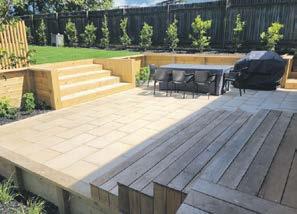
We add value with what you outlay For a Florida landscape phone us today

www.floridaltd.co.nz

COMMERCIAL PROPERTY • FARMING EMPLOYMENT PERSONAL
Val was an RSA trailblazer
By Viv Posselt
Talk to anyone about Val Brett and you’ll find she was known as particularly diligent and organised, an irrepressibly ‘no-nonsense’ contributor to her community.
What is probably less known is the fact that Val, who died recently aged 84, was believed to be the first female president of any New Zealand RSA. The former Royal New Zealand Air Force servicewoman held the reins at Te Kuiti’s RSA twice – once from 2005 to 2010, and again from 2012 to 2018, and was awarded a life membership.
While 2005 might seem relatively recent for a woman to have filled the top slot, it speaks to the norms long associated with returned services organisations in many countries.
Val’s contribution was said to have been well beyond duty. Even when struggling with illness in later years, she ensured all RSA members in the area were being well looked after, and for as long as possible she remained proactive in helping with Anzac Day and Poppy Day arrangements.
Such was Te Kuiti’s regard for her, that Val was among six residents honoured by the Waitomo District Council in 2021 when she was presented with a Lifetime

things,” said Michelle, “including patchwork, knitting, crochet and sewing, but embroidery was her passion.”
COMMERCIAL PROPERTY • FARMING EMPLOYMENT PERSONAL
Experienced professionals. Local specialists. Quality advice.
Cambridge | 07 827 5147
Hamilton | 07 848 1222 www.lewislawyers.co.nz
Experienced professionals. Local specialists. Quality advice.
Experienced professionals. Local specialists. Quality advice.
Cambridge | 07 827 5147
Cambridge | 07 827 5147
Hamilton | 07 848 1222 www.lewislawyers.co.nz
Hamilton | 07 848 1222 www.lewislawyers.co.nz

Achievement Award. The citation noted her ‘outstanding community focus’ through her involvement in community projects and initiatives that made a significant difference in the district.
It noted her 30 years’ involvement with the RSA and said: “Attention to detail and making sure things were done the right way is Val’s speciality, and over her years of service, Val has been an important mentor for many members of Te Kuiti RSA, particularly the younger generation.”
Val’s daughter Michelle Freebairn said her mum had been a widow for many years having lost her husband Dave Brett to an accident in 1985. Val moved to Te Kuiti after that, purchasing a house then bravely sitting and passing her driver’s licence at age 48 and buying her first car.
Val went on to work at various outlets, including Te Kuiti Craft Supplies, Mayfair Dairy, New World, Waitomo News, as well as for the NZ Census and local body elections. She also volunteered for years at the citizen’s advice information centre, and more recently was a regular volunteer at second-hand shops.
“She was passionate about handcrafts, and dabbled in most

Dave Brett’s father, the late Reg Brett, was well known in Ōtorohanga for the many years he devoted to Hato Hone St John – so much so that one of the town’s parks, the Reg Brett Reserve, carries his name.
Val and Dave met at a dance in Hamilton and married in 1962. Dave was the drummer in a band called The Jayaires, and Val joined as a vocalist. They played at dances around the King County during the 1960s and 1970s.
Former Waitomo District Mayor Brian Hanna, who was also presented with a Lifetime Achievement Award in 2021, said he had been saddened to hear of Val’s passing.
“I shared a long association with Val when I was Waitomo mayor and Val was RSA president. She took her role very seriously and wanted everything well planned and well organised for the annual Anzac Day commemorations.
I occasionally got a telling off if that didn’t happen, or I suggested something different,” he said. “Val was a passionate RSA president, and I considered her a good friend.
Val Brett during her early air force years. Photo: supplied
The late Val Brett is believed to be the first woman elected as president of a New Zealand RSA.
Photo: supplied
Norm shares the powers
By Viv Posselt
There is much more to nonagenarian Norm Frew than his fetching silver-fox style.
The 93-year-old has become the first Cambridge Resthaven resident to take up the facility’s EV car-sharing option. Every now and then he glides off in the Resthaven Nissan Leaf, driving himself to appointments in town and buying whatever is needed for his wife Mary who isn’t able to go out herself.
The couple were the first to move into Resthaven’s new Hanlin Building when it opened in April 2024 as part of the Apartments on Vogel development.
Several years before that, Resthaven began transitioning its vehicle fleet to electric. It now has two electric vehicles as part of its driver-supported ‘To & Fro’ service, as well as the recent addition of the Nissan Leaf as its first carsharing service for apartment residents. The village has charging stations adjacent to where the vehicles are parked.
The facility’s independent living manager Jeff Simpson said residents book the EV for free.
Norm, who is known to be
particularly tech-savvy for one of his vintage, was ‘first cab off the rank’, so to speak. He has been driving from the age of 16 and is thoroughly enjoying himself. He finds everything about the EV, including the charging process, perfectly easy.
“It’s lovely to drive, no problem at all. It just took a little getting used to at the beginning,” he said, while admitting it was quite a technology leap from his first car, a Ford Model Y he purchased from his dad for a hundred pounds. Norm sold his last car just a few weeks ago.
He has enjoyed numerous vehicles over the years, including a Toyota Crown he drove while in Singapore as part of the New Zealand Army Band. Norm is a euphonium man, and remembers playing with the NZ Army Band at the 1974 Commonwealth Games in Christchurch.
Jeff Simpson said the idea of the EV is to enable residents to maintain their independence.
“The cost of running and maintaining a personal vehicle these days is high… we don’t want people to have to worry about the day-to-day costs of individual vehicle ownership.”







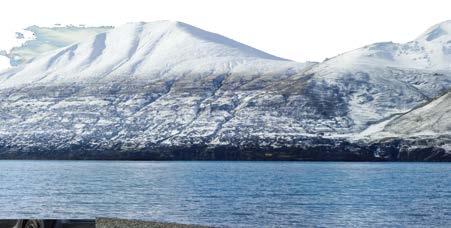
Resthaven Cambridge’s Jeff Simpson with 93-year-old Norm Frew and the facility’s Nissan Leaf EV.
Photo: Viv Posselt
School bands star in Sydney
Cambridge High School’s Concert Band and Jazz Band have returned from the Australian International Music Festival in Sydney with outstanding results.
The Concert Band received a Silver Award, while the Jazz Band earned a prestigious Gold Award, placing highest among all jazz ensembles at the festival.
A standout moment was performing on stage at the Sydney Opera House, alongside other key performances at Chatswood Concourse Concert Hall and Darling Harbour.
The Concert Band also gave the world premiere of Te Manu Haerenga, composed by Cambridge High’s head of music, Daniel Peters, and featuring taonga pūoro. Additionally, students took part in a cultural exchange with Ying Wa College from Hong Kong at the Sydney Conservatorium of Music.
“The trip was an unforgettable experience that showcased the talent, professionalism, and mana of Cambridge High School’s young musicians on an international stage,” Peters said.

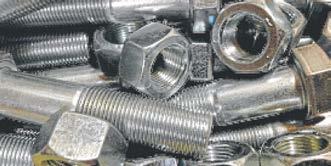
• Nuts &bolts
• Bearings &seals
• Brassbushes
• Trojantrailerparts
• Weldingrods

• Grindingdiscs
• Taps
• Drills
• Totaloil
• Brassfittings




CAMBRIDGE VOLUNTEER FIRE BRIGADE CALLS OVER THE LAST WEEK
TUESDAY
13:10pm, Roadside vegetation fire, Tirau Road 5:48pm, Fire in the vicinity, Pukemoremore Road
CAMBRIDGE VOLUNTEER FIRE BRIGADE C ALLS OVER THE L AST WEEK
6:43pm, Building alarm sounding, Wilson Street
WEDNESDAY
9:55am, Cardiac Arrest, Bryce Street
WEDNESDAY 4:47pm, Smoke in the vicinity, Williamson Street 9:33pm, Fire alarm sounding, Raleigh Street
1:09pm, Building Alarm and evacuation, Ruakura Road
THURSDAY
7:55am, Cardiac arrest, Pencarrow Road
11:56pm, Building Alarm and evacuation, Hautapu Road





FRIDAY
FRIDAY
00:53am, Single car MVC, Maungakawa Road
8:42am, Building Alarm and evacuation. Maungatautari Road
3:22am, Building alarm and evacuation, Anzac Street 8:42pm, Building alarm and evacuation, Alpha Street
SUNDAY
3:53am, Medical assistance, Karapiro Road
SATURDAY 5:27pm, Assist police, ladder required, Taylor Street





STUNNING PENTHOUSE APARTMENTS
Discover the freedom and comfort of our supported living apartments with a choice of support packages.* Enjoy the convenience of two delicious meals a day from the café, our EV car available for apartment residents’ personal use, and much more.
NOW AVAILABLE:
1-Bedroom north-facing $620,000*
2-Bedroom with views of Maungatautari and Pirongia $930,000*
* Purchased under an occupation right agreement (ORA) plus a weekly support package fee
Contact Sandra Fairhurst on 07 827 6097
E: sales@resthaven.org.nz 6 Vogel Street, Cambridge
Members of the two bands pictured outside the Sydney Opera House.
Penalising the young
By Peter Nicholl
A colleague recently sent me an article by a former Secretary of the Treasury on the problems in the tax system and recommendations for change.
Among other things, he wanted “a tax system that does not disadvantage younger people who are in the work force”. He said the “lazy reliance on bracket creep to bring the budget back to anything approaching balance is doing enormous damage to younger people in particular”.
The thing I found sad and worrying about these comments was that the person was actualy talking about the Australian income tax sytstem. But the New Zealand income tax system is even more biased against young and low-paid workers.
The tax brackets in New Zealand were introduced in 2010. Since then our average income has risen by over 70 per cent while the tax brackets stayed the same. It’s a great system for the Government as their tax take rises steadily without them appearing to increase taxes. But that is exactly what the government is doing. The Australian commentator called it a ‘lazy system’. You could also call it a sneaky and underhand way of raising taxes.
The Australian system also has an initial income tranche on which the tax rate is zero – up to $18,200. We used to have a zero tax income tranche too - I am not sure when it disappeared.
Someone working part-time in Australia, possibly while studying, and earning up to $18,200 would pay no income tax. Someone doing the same thing in here would pay just over $2000. Someone earning $50,000
a year here would pay around $7650 in tax while the person earning the same amount in Australia would pay just over $6000.

It seems we have sleep-walked into a situation where young people earn lower incomes in New Zealand than in Australia but pay higher taxes on that income. It should not surprise us that many young people are crossing the Tasman.
Two other features of our tax system also make it more regressive than the Australian system, penalising young people further. We raise around 30 per cent of our tax revenue from GST. In Australia, GST is about 12 per cent of tax revenue. GST is a regressive tax as low-income people typically spend a larger proportion of their income on consumption.
We are also is one of the few OECD countries that does not have a capital gains tax. Australia’s capital gains taxes are not heavy – I think they raise just under 10 per cent of the Federal Government’s revenue. The hesitation and nervousness amongst politicians here to even discuss this issue can only be described as an abdication of responsibility. There have been recent surveys where a majority of respondents supported some form of capital gains tax as most taxpayers can see that the problems we have with infrastructure investment and superannuation entitlemnents which will sink the current tax system unless the tax base is broadened. The leadership on this issue is coming from the people, not from the politicians.
FAITH IN WAIPĀ
Living fully and completely…
By Murray Smith, Bridges Church
When former leaders, be they prime ministers, sporting stars, business or community leaders document their recollections and publish memoirs, it’s a fraught assignment. Since memories carry significant elements of perception, their thoughts tend to incline more to being subjective rather than objective. Little wonder readers find accepting some author’s recollections of ‘the way things were’ challenging.
An autobiography titled ‘My Life,’ was written by David Lange who served as the 32nd prime minister of New Zealand from 1984 to 1989. Lacking self-aggrandisement, it’s as down to earth as the man himself. A skilled and formidable debater in parliament with razor sharp wit that was often self-deprecating, Lange assumed no ‘airs of grandeur’ but remained grounded in reality. It showed in many ways, including declining acceptance of a knighthood.
Growing up in South Auckland contributed to his tenacious advocacy for the welfare of Māori and Pasifika communities he knew and cared for so well. Raised in a strong Methodist family, Lange became a Methodist lay preacher. He worked in the 1960’s at the West London Methodist Mission where his passion for ‘Christian socialism’ grew.
He was admitted to the Supreme Court of New Zealand in 1967, and earned a Master of Laws degree with honours, specialising in criminal law and medico-legal issues. David often represented marginalised individuals and groups, including the Polynesian Panther Party during the “dawn raids”.
In the early 70s, in my late teens, I had brief but memorable encounters with David while he served as a duty solicitor in the Auckland Court where I was acquitted of a minor matter. His sprawling size and somewhat shambolic
appearance then, left me with a permanent visual.
After winning a byelection in 1977, for the Labour seat of Māngere he served the interests of the disadvantaged, retaining the seat with substantial majorities until his retirement in 1996.

In June 1984, prime minister Robert Muldoon called a snap election. David Lange’s remarkable campaign won Labour a landslide victory, securing a 17-seat majority in the 95-member House of Representatives.
At 41 years of age he became New Zealand’s youngest prime minister of the 20th century. He’d also arguably be the biggest, carrying excess weight that represented a lifelong challenge.
At a function where food platters were being passed among attendees, David was in earshot of someone declining nibbles saying, “No thanks, my body is a temple…”
The prime minister beckoned the waiter, shouting with a big voice, “Bring it over here… mine’s a warehouse!”
The flippancy of that moment carried truth. Though it may seem a bizarre thought to some that we are designed to be a ‘temple’a dwelling place for God, it’s nonetheless essential truth to be heard and considered in order to ‘live fully and completely.’
Being human, means to be a ‘spiritual’ entity - not just a physical one. Being ‘indwelt’ by God, or the Holy Spirit, is a core concept in Christianity, signifying a spiritual union of God’s Spirit and our human spirit. This indwelling is a gift received upon accepting Jesus as Saviour - the resulting transformation where a believer’s body becomes a temple for the Holy Spirit, is the mark of being a Christian.
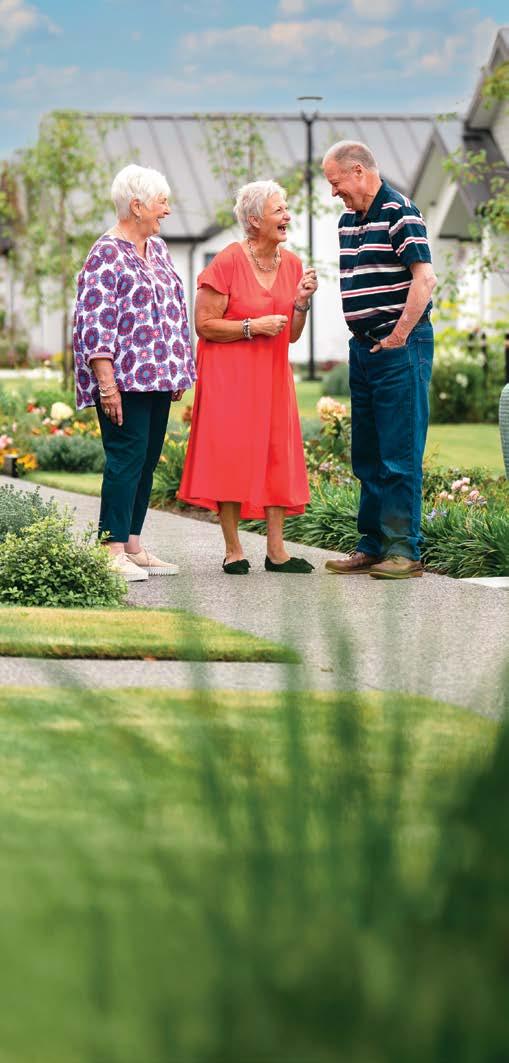

Fredd’s winning formula
Fredd Briggs and his wife Dee had to consider Michael Schumacher when choosing the right townhouse at Ryman’s Patrick Hogan Village in
Cambridge.
Fredd and Dee Briggs may have moved into a village named after a legend of the horse racing world, but
it was motor racing great Michael Schumacher that helped them with their decision making process. Fredd, 80, was once regarded as
Australia’s most prolific automotive artist, and was set on bringing a giant canvas painting of Schumacher to take pride of place in the couple’s
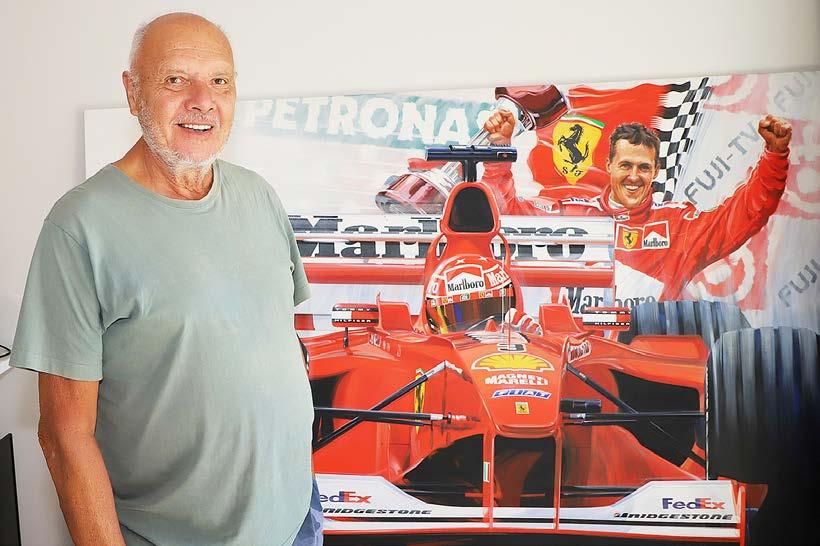
living room.
“We had to have this townhouse because of the wall. It needed to be big enough to fit the artwork!”
Fredd created the 2.5m by 1.7m piece in 2001 and it is a great example of his illustrative and artistic talents.
It was motor racing and cars that allowed Rotorua-born Fredd, under his freelance business name Frederal Bureau of Illustration (FBI), to carve himself a real niche across the Tasman.
The self-taught artist had humble beginnings at a small two-man advertising agency in Auckland.
From there he left for London for the traditional OE and it was after a visit to the British Grand Prix at Brands Hatch in 1966 that his passion for motor racing was ignited.
Returning to New Zealand and marrying Dee, who hails from Pukekohe, the pair set off for Melbourne where a planned two year stay stretched out to 50 years.
During that time Fredd steadily built up an impressive portfolio, producing thousands of detailed illustrations for clients who couldn’t get enough of his talents. The companies who commissioned his work ranged from Ford to Ferrari, Australia Post to Porsche, and the events included V8 Supercars, Bathurst and Indy Car.
“A brief could come from someone in Adelaide, Queensland, Melbourne… they’d send me all the




Fredd with painting of Michael Schumacher and his Ferrari, proudly on display in the new townhouse he shares with wife Dee.
is down to Schumacher
details and I’d treat it as a hobby –but I’d get paid for it.”
In the early days, Fredd says most of his work came from leading Melbourne advertising agencies.
“I would deliver completed artwork only to be given more on the way out,” he says. “I reckon I’ve done over 50,000 individual line and tone illustrations.”
The work would often lead to opportunities to meet all kinds of fascinating people from the world of motorsports, such as Sir Jack Brabham, Bob Jane and Peter Brock.
“I was very lucky and privileged to be invited into many of Melbourne’s private auto collections and garages. I got to meet many interesting, creative people –photographers and designers, and most notably I got to have a 20 minute one on one chat with Lamborghini’s chief test driver Valentino Balboni.”
Often when he was teaching some of his techniques, students would ask, ‘How do you get a job like that?’
“And I’d say, you don’t, I’ve already got it.”
High profile commissions included a set of motor racing stamps for Australia Post, a series of phonecards for Telstra and decorating an ‘art car’ with the theme of Melbourne’s weather for the annual Moomba Parade.
Fredd says his number one client was Porsche Australia.
“They had beautiful cars, friendly staff, and nice coffee!”

made it onto a series of
The commission that gave Fredd the most pleasure came from the Australian Ferrari Club, who asked him to create a 25m by 2.5m mural to celebrate Ferrari’s 70th anniversary. And he had just five weeks to do it!
“That one, I didn’t think I could do it and I spent a sleepless night
wondering how it could be done. But then I woke up and I knew exactly what I’d do.
“I didn’t use a computer for my illustrating work but I had a great collection of books and magazines to refer to and I did all these fantastic drawings in pencil. I drew them on A3 art paper and positioned
them all together. There were 47 separate drawings, using soft pencil featuring different models from the first in 1947 right up to 2017. These would then be printed onto fabric for the final installation at the Ferrari Formula 1 corporate function.”
Fredd’s idea was a huge hit, and being his last abig commission,
the pencil drawings have great sentimental value: “These are very precious to me. I just loved it,” he says.
The 25m long artwork was later auctioned off for $25,000.
In Melbourne Fredd and Dee lived in an 1880s Victorian terraced seven-bedroom home in Albert Park which doubled as a studio and exhibit space for some of his work. While they didn’t know it at the time they bought it, the house turned out to be the perfect location for car-mad Fredd, being right opposite Gate 1 of the Melbourne Grand Prix track.
After five decades however, the couple decided to move back to New Zealand to be closer to family and after three years in Ōhope they investigated some retirement living options.
“We liked the fact that there would be no maintenance and we thought because Cambridge is in the middle of everything we can go to Ōhope to stay with my sister or Auckland to visit people up there.”
Now, a few weeks after moving into Patrick Hogan Village, Fredd and Dee are finalising furnishings for their new two bedroom townhouse in the heart of the village and enjoying getting to know all their new neighbours.
With construction on the Village Centre beginning next month, the couple is looking forward to enjoying more happy hours and movies in the new space.
Exciting new villa designs, just launched
We’re
We’ve
Now


































Fredd’s designs
stamps for Australia Post.
Matamata
Kneebone nicks first training win
Tauranga’s race meeting on July 6 marked the beginning of a new venture for Nick Kneebone.
The Cambridge-based horseman saddled his first raceday runner, the appropriately named Nick Time, who finished sixth in the Container Co Maiden (1400m).
Kneebone, son of longtime auctioneer and New Zealand Bloodstock’s Director of Business Development Mike Kneebone, has spent a large part of his 20s gaining
international experience to set him up for his move into training.
“It’s something that’s been a fair few years in the making,” he said.
“I started off over in Sydney with John Sargent, who obviously trained very successfully in New Zealand before making the move to Australia. I learned so much during my time with him, and now it’s great to be back home and putting that knowledge into practice with my own career.

“I want to give it a crack at a time when it looks like New Zealand racing is on the up. The prize-money increases have been great news for the industry here in recent times and I’m very keen to be a part of it.”
Kneebone has purchased the Cambridge stable that was formerly owned by the now Cranbourne-based Trent Busuttin and Natalie Young.
“I’ve taken over Trent and Natalie’s old stable, which in more recent times has been leased by Hollie Wynyard,” he said.
“We’ve been putting a lot of work into whipping it into shape and it’s all coming together nicely. There’s still a little bit of paddock fencing to go and things like that, but I’m really happy with how it’s all coming together.”
While a large part of his operation will centre around preparing horses for the NZB Ready to Run Sale at Karaka every November, Kneebone will also serve as a public trainer.
“I’ve got 20 boxes here,” he said. “The number of horses will go up and down a bit depending on the time of the year. I’ve got eight pointing towards the Ready to Run Sale, so they’re not far off coming back in to start their




preparations.
“There’s a few older horses that are up and racing too. I’m lucky enough to have some outside clients that are giving me some really good support in this early part of my career.
“We’re only a small team, so there’s plenty going on to keep us busy.”
A key member of that team is Tony Allan, whose successful career in the saddle has produced over 1000 wins, headed by the Gr.1 Melbourne Cup (3200m) with Empire Rose in 1988.
Allan has trained his own team of horses at Otaki in recent times but has made the move to Cambridge to be Kneebone’s main trackwork rider.
He has brought his own horses with him, including his first runner at his new home track, Perfect Posy, who he rode into second place in Thursday’s Cambridge Equine Hospital (970m).
“Tony and I go way back, I’ve known him for years,” Kneebone said. “I was struggling a bit for trackwork riders, so I just sent him a message one day saying that I’d love to have him up here at Cambridge if he was keen. He jumped at the opportunity.
“He’s been an awesome help. He does a lot of the
gallops for me, and his knowledge and insight has been so valuable. He seems
to have settled in really well in Cambridge and he’s loving it. – NZ Racing Desk
Jockey mourned
By Joshua Smith
“You knew straight away when you saw him on a horse that he was a natural.”
Those were the words of New Zealand Thoroughbred Racing Northern Riding Master Noel Harris when describing 18-year-old apprentice jockey Ngakau Hailey (pictured) who died following a collision.
His motorbike and a car collided in central Hamilton on Wednesday last week.
“It’s tragic, words just can’t describe it. I was talking with him on Monday and then this happens,” New Zealand Thoroughbred Racing Northern Riding Master Noel Harris said.
Hailey, apprenticed to Te Awamutu trainer Debbie Sweeney, launched his riding career two years ago and recorded his first win on the Sweeney-trained Chattahoochee at Cambridge in June 2023. He rode 39 winners in the last two seasons.
Hailey was initially raised

on the East Coast where he began riding bareback. He competed in horse sports before moving to Hamilton when he was eight.
He aspired to play at a high level in rugby league, and played for Hamilton City Tigers, Waikato Māori and Waikato District. His small stature kept him from progressing in league but helped follow a new path when he joined his uncle on a trip to Pokeno where tried his hand at riding track work. He began riding regular track work for trainer Shelley Wright before commencing his apprenticeship with Sweeney.
A service was held at Park Chapel, Newstead Cemetery on Monday.





Tony Allen and, right, Nick Kneebone.
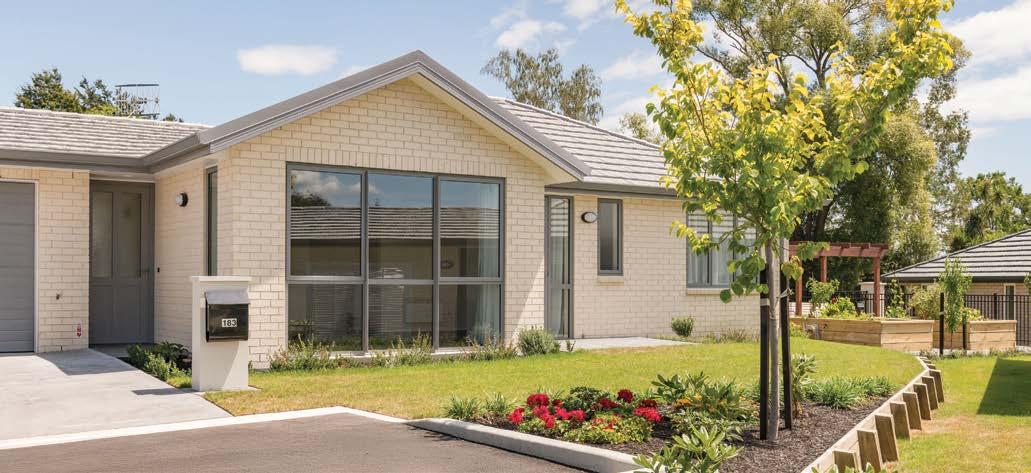


Summerset Cambridge Weekly Morning Tea & Tour

Summerset Cambridge offers a relaxing and low-maintenance lifestyle in a vibrant and growing village. The grand village centre is well underway and once complete at the end of 2025, will offer a range of fantastic facilities for you to enjoy, from an indoor pool to a cafe and residents’ bar.
Located within the village centre, our serviced apartments are now selling off plans and offer the perfect balance between independent living and support on hand. The stunning new serviced apartment show homes are open to tour too.
We know that moving to a retirement village is a big decision. So why not come along to our Morning Tea & Tour, every Wednesday in July. See for yourself why our residents love the Summerset life.
Love the life you choose.
Morning Tea & Tour
Every Wednesday in July, 10.30am
Summerset Cambridge 1 Mary Ann Drive, Cambridge 07 839 9482 | summerset.co.nz/cambridge
2050 – a step too far
A Waikato University pest expert says New Zealand’s bid to be predator free in 25 years is – at present – out of reach – and more fenced sanctuaries should be created.
Carolyn (Kim) King, a university emeritus professor, has been studying stoats and their effect on New Zealand’s native species and biodiversity for the last 54 years.
Stoats were introduced, despite protests, in the 1880s in the hope of bringing the country’s rabbit population - introduced by European settlers for food and sport 50 years earlier - under control. The stoats found native wildlife much easier to catch and became invasive predators.
King, who immigrated from the United Kingdom in 1971, holds a PhD on weasels. It was thought her expertise could help with New Zealand’s stoat problem.
Weasels and ferrets were also part of the doomed 1880s attack on rabbits but stoats were the most successful predator of the three.
They have few natural enemies other than rare encounters with ferrets or cats, so the only effective limit on their numbers is food shortage.
“Populations of animals are controlled either from the bottom up by food supply, or from the top down by natural enemies. And stoats belong to the first category,” she said.
King said New Zealand’s predator free hope is out of reach because of the lack of technology and resources to enable effective control of invasive predators like the stoat.
The plan was launched in 2016 by Prime Minister John Key – but the Crown owned company driving the programme is being disestablished as part of the 2025 budget. Its responsibilities will be shifted to the Department of Conservation.
King said trapping should continue because ‘the moment you stop trapping predators, they all come back”.
“...It’s still worth doing because you can make a difference to the survival rate of birds that are breeding in that area.”
In more remote areas, and for the severely endangered and most precious endemics,
King said for the same amount of money as any feasible extension of Predator Free 2050, there could be an increased number of fenced sanctuaries like Maungatautari in Waipā.
“There are people who argue that we don’t want the whole country dotted with fenced sanctuaries. But in areas which are beyond human access like the high country, it isn’t possible to put enough pressure by conventional means on stoats and rats. What would help would be a series of fenced sanctuaries at the same cost as a massively extended
King’s latest book, summarising more than five decades of research, is titled Stoat in the Dock: Ecology and Management of Invasive Mustelids in New Zealand and documents the history and management of stoats in New Zealand.
‘There
are people who argue that we don’t want the whole country dotted with fenced sanctuaries. But in areas which are beyond human access like the high country, it isn’t possible to put enough pressure by conventional means on stoats and rats,’ - Kim King
“The suggestion that stoats should be brought in to control a self-sustaining rabbit population was based on a very naive 19th century idea about the balance of nature. But New Zealand is a very different environment from that of United Kingdom, so people here are now facing a very different dilemma of trying to manage stoats,” she said.
“We should take into account that even if predator control looks easy to do and the results look as if they should be worthwhile, it is not wise to proceed until after you have looked very carefully at the whole issue, because you’ve got to know the historical and biological background.
“Some attractive ideas risk repeating the 19th century misjudgement that brought stoats here in the first place. Who wants to be responsible for that?”






Carolyn ‘Kim’ King.
It’s estimated stoats kill more than half the kiwi chicks hatched every year.
Photo – Northland Regional Council.
Meat market stays buoyant
By Jon Rawlinson
Sheep and beef farmers counting the costs of the summer drought are seeing a bullish meat market.
The drought prompted many King Country farmers to sell lambs early said Kevin ‘Morty’ Mortensen from PGG Wrightson Te Kūiti.
“A lot of lambs were killed or sold at the end of the summer and into early autumn just due to the fact that there was no feed, it was just too dry.
“We were fortunate that markets on the other side of the North Island and South Island could take them and some of the prices farmers received were higher than usual,” the regional livestock manager said.
According to Rabobank’s New Zealand agribusiness July report, beef and sheep meat prices remain strong.
As an indication, the beef price is about $2 a kilogram, higher than at the same time last year, while lamb is sitting at about $9.50.
A fertile spring could help farmers, however last summer’s drought may prescribe another bitter pill by reducing lambing percentages.
“Farmers are just getting into scanning their ewes, which probably weren’t in quite as good a condition because of the drought – I just hope that hasn’t affected it too much,” Mortensen said.
There may also be further pain
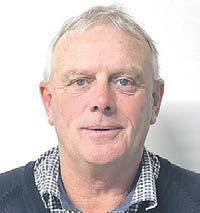
before improvement at the meat works. About 70 jobs have been cut at Te Kūiti Meat Processors due to a reduction in animals sent to slaughter.
Bull sales have been roaring ahead in the meantime. Prices have been higher than usual for calves and bulls at stock sales.
“They’ve exceeded expectations in a couple of ways, their values were right up there and the clearances and the numbers sold were very pleasing.”
Prices for beef calves are cause for cautious optimism, but there are no guarantees.
“It’s looking pretty positive for the next two to three years down the track and that’s reflecting in what people are paying.”
But he warned “we’re dealing with the meat industry and that can change”.


‘Careless’ companies fined
Waikato Regional Council has revealed the prosecution of three companies over effluent and environmental damage issues.
A Waikato farming company was $49,000 for the unlawful discharge of dairy effluent from an effluent storage pond in January 2024.
Apex Farming Limited was sentenced by District Court Judge Melinda Dickey in the Hamilton District Court.
Forestry management company Gray’s Forestry Services Limited and logging contractor Henry James Hale were convicted in the same court in March and this month respectively on a total of eight charges of breaches of the Resource Management Act.
The effluent case related to a compliance inspection in January 2024 at a farm at Wharepuhunga, near Te Awamutu. They found one of two dairy effluent storage ponds was overflowing and effluent ponding in the surrounding paddock was running off into a farm drain which is a tributary of the Mangawhara Stream.
Judge Dickey found the defendant was highly careless in the management of the farm effluent ponds and the system was vulnerable to human error or lack of oversight.
The charges in the other two cases related to breaches of resource management regulations associated with work on two sites in the Honikiwi district.
A six hectare woodlot in Okoko Road, Honikiwi, situated on a steep hillside above the Waitaheke Stream was harvested in the winter of 2023. The court heard there was a lack of appropriate erosion and sediment controls on the site, a failure to stabilise exposed soil and little effort made to prevent sediment and slash discharging into the Waitaheke Stream.
The second site was part of a 16ha woodlot on Kāwhia Road, Honikiwi, with a tributary of the Ngutunui Stream flowing through the forest. Harvesting and associated earthworks started in
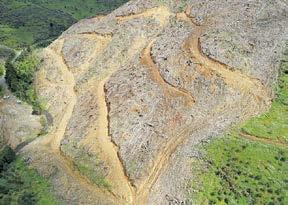
December 2023 and resulted in an illegal river crossing being installed, significant damage to the bed and riparian margins of the stream, and the discharge of sediment and harvesting slash into the stream.
Gray’s Forestry Services Limited was convicted on four charges and fined $87,500 for its role as the harvest manager. Hale, whose contracting company has since gone into liquidation, was also convicted on four charges and sentenced to 150 hours’ community work.
Judge Lauren Semple said the company was highly careless, bordering on negligent in its supervision of the site and that this lack of supervision enabled or permitted the environmental damage to occur.
She described Hale’s actions as highly careless bordering on reckless, when it became clear the planned harvesting method was unsuitable for the conditions.
Waikato Regional Council’s acting Regional Compliance Manager Evan Billington said damage to the stream in the Kāwhia Road harvest block was extensive and it was apparent little effort had been made to protect the waterbody or minimise the impact of harvesting on the tributary.










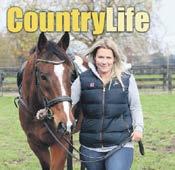



Kevin Mortensen
The harvest area above the Waitaheke Stream on Okoko Road which resulted in a prosecution.
It's been a honey of a season
By Chris Gardner
Lindy Bennett’s bees made honey while the sun shone through the drought.
“Warm, sunny days with little wind are perfect for bees,” Bennett said.
“They can forage longer, collect more nectar and pollen, and keep the hive humming.”
Her bees, whose honey is sold under the Mountain View Honey label, produced 1000kg of honey last season, helping her pay for the honey packing shed she made from an old shipping container and installed on the dairy farm near Pirongia early in the season.
She hopes to double honey production next season.
This winter the couple have

planted their dairy farm in manuka and kanuka trees to give her honeybees plenty to forage. They planted 2000 trees in June, after planting 4500 trees last year.
“We used to farm at Kakepuku, and the bees used to forage well,” Lindy said. “We are trying to give them something to forage in the winter.”
As well as keeping bees in eight hives on her farm, she keeps 12 hives near Mt Pirongia, 10 in Waitomo, eight near Mt Kakepuku, 10 near Mt Ruapehu and two near Mt Maunganui.
Each hive homes between 40,000 and 60,000 bees, including its own queen, sourced from the Waikato bee keeping community.
The going rate for a queen bee is between $50 and $60.
While Bennett hopes next season will be profitable, it’s still a labour of love.
“It is still at the hobby stage,” she said.
Before she can sell her honey the Ministry for Primary Industries insists, she must test it for plant toxin tutin which is found in tutu plants.
“I have been testing every year,” she said. “I have never had any problems.
Bennett started bee keeping at Kakepuku.
“I have always been interested in bees,” she said. “I’d just bought a book on beekeeping, purchased
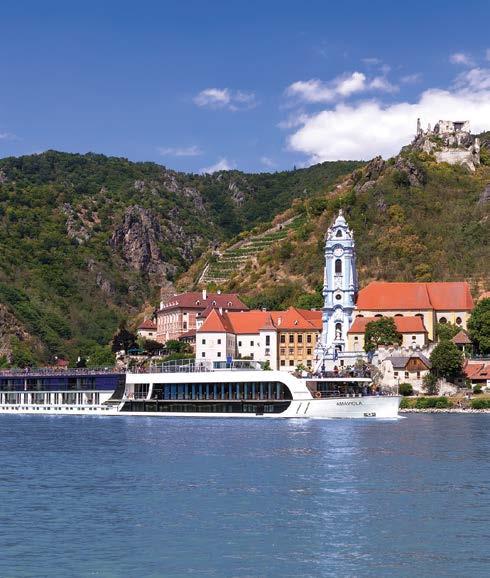


brand new hiveware, and finished painting the undercoat — when, out of the blue, our first swarm arrived. We skipped straight to chapter seven on swarm catching and dived right in from there.
“We got up to about 12 hives at Kakepuku.”
She believes bee keeping is
a good thing for her as well as the family – she has two young daughters. Even if she doubles her hives to 100 this summer, Bennett says she is far from making the endeavour a full-time job.
“Four hundred hives is a fulltime job for one person,” she said.

Lindy Bennett working with bees.
Lindy Bennett converted a shipping container into a honey packing shed on her dairy farm near Pirongia. Photo Chris Gardner
Strike 3: it’s a new generation
By Chris Gardner
Farmers are being urged to conduct a technology audit before telcos switch off New Zealand’s 3G network.
2degrees and One NZ will shut down their 3G, or third generation, mobile networks at the end of the year and Spark will follow next March.
The 3G network was introduced to New Zealand with the iPhone in 2008.
“It’s a bit long in the tooth now,” New Zealand Telecommunications Forum chief executive Paul Brislen said. “We can put the spectrum to better use with 4G and 5G networks.”
While mobile phones and tablet computers such as iPads are the most obvious devices to check for compatibility with more modern 4G and 5G networks, other farm management platforms and smart devices could also be
impacted.
Some electric gates, farm security systems, irrigation controllers, smart meters, soil moisture probes, solar panels, vehicle trackers, and weather stations are among “smart” systems” which could be impacted. So are medic alert systems and pacemakers.
Most modern phones use the 3G network, but they are not reliant on it.
The best way to ensure you can make calls after the switch off is to text 3G to 550 for a report back on your particular phone. An immediate response comes to identify the device which sent the text and whether it can connect to 4G.
“Most people will be fine,” Brislen said.
“Some people will have phones that can’t be upgraded, but for many in between they’ll need to make some changes to the
settings or download some software to make it work.”
For some, a visit to their mobile provider’s store is in order.
He said providers have been working over the past couple of years to upgrade their equipment and will have a plan - so customers were best advised to get in touch with them about what needs to be upgraded and what that looks like
“In terms of coverage the good news is that all the 3G towers are being upgraded to 4G and a bunch of new towers are being built to fill in the gaps,” Brislen said.
“Coverage should be as good if not better, because 4G can carry more customers per cell site than an equivalent 3G tower, so you won’t find there’s as much congestion on the smaller towers.
“One NZ is also turning off its 2G network, and


by the end of the decade Chorus will have shut down the last few remaining copper lines. If you’re using any of these technologies now is the time to work out what you need to do for the future.”
Uni team takes their pick
A Waikato University team is developing cost-effective technology to reduce fruit wastage.
Te Kura Mata-Ao School of Engineering senior lecturer Ajit Pal Singh and his team of seven have been working on a new gripper, the part at the end of a robotic system that physically picks the fruit, much like a human hand.
“One of the innovations is the actual gripper structure. The other is a soft ‘finger’ that attaches to the structure and gently interacts with the fruit, so it doesn’t get damaged,” said Singh.
“If the fruit is bruised or dropped, the benefit of robotic automation is lost. Our designs aim to reduce damage through their soft, flexible contact surfaces.”
The team believes the system could assist growers facing labour shortage - “a lot of fruit goes into the waste because it’s unpicked - so they’re losing money”.
The team’s long-term goal is to develop robotic tools that reduce dependence on seasonal labour.
Preliminary field trials with the grippers had produced promising results - effective fruit handling and
minimal visible damage.
“These grippers are 3D-printed prototypes, single, jointless structures designed specifically for orchard use, not just lab testing.” Singh said.
“We wanted something that performs in real conditions: easy to maintain, robust, and ready for the
demands of the field.”
“From an engineering point of view, our focus is on solving practical, realworld challenges.
“This project is a strong example of how innovative design can potentially deliver high-impact solutions tailored to industry needs.”
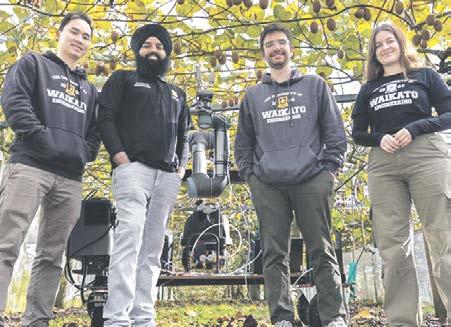
EXPERTS

The Blended Bunch – Succession Planning for Stepfamilies
Every family is different, and blended families are no exception. The classic scenario is two people in a relationship who each have children from previous relationships. It is common for each parent to want to make sure their own children are looked after and receive the assets their own parent contributed to the relationship. However, while you may have your plans for what happens when you pass on, the law often has a different idea.
For starters, you are required to make “adequate provision” in your Will for your spouse. You also have a moral duty to look after your kids. These obligations can be tricky to balance.
There may be further complications. Your spouse’s child might perform some kind of service for you, such as assisting on the farm when you can’t work it the way you used to. This scenario could give rise to a claim that the child did this expecting to be rewarded in your Will - a successful claim could come at the expense of your natural children. Furthermore, if your relationship ends you could expect to part with some of your wealth.
The key to avoiding a worst-case scenario is preparation ahead of time. Ensure your Will is current. Consider establishing a family trust, preferably well ahead of starting a new relationship. You may also consider contracting out of relationship property laws. Always get proper legal advice to ensure your future unfolds the way you envisage it.

Jamie Graham



DRAINAGE
New Zealand Telecommunications Forum chief executive Paul Brislen is urging farmers to conduct a technology audit.
Ajit Pal Singh pictured second from left with Hung Le Phan, Christoff Venter and Eva Prinz.
Axing the pine explosion
By Jon Rawlinson
More than 300,000 hectares of sheep and beef farms have been sold for forestry throughout New Zealand since January 2017, Beef and Lamb says.
Its report said sheep and beef farm sales for conversion to forestry are continuing at an alarming rate.
“It’s clear that more and more trees are going onto productive sheep and beef farmland,” the organisation’s chair Kate Acland said.
“The numbers show whole-farm sales for conversion to forestry for carbon credits are continuing at pace.”
Her comments come as the government pushes ahead with a bill to put a cap on conversions which Agriculture minister Todd McClay said have been “gutting” rural communities.
Mapiu sheep and beef farmer David Richardson told The News if the trend continued, rural communities would feel the pain across the board.
“It’s mostly whole farms being sold and converted to grow pine because there’s such good money through carbon credits. We’ve already lost huge numbers of stock units to forestry, and it’s hit other downstream jobs like vets, shearing, drenching, fencing and all that.”
Meat processing businesses have also been feeling the pinch, Richardson said.
“The meat processors are being adversely affected by the increase in sheep land gone to forestry, which has happened in this area quite a bit. It’s mostly due to ‘carbon credit farms’ that have been sold in the last 12-18 months.”
Pine forests also come with their own environmental impacts through increased biosecurity, fire and flooding risks as well as damage and pollution from forestry slash.
While native bush is better than pine from an environmental standpoint, it doesn’t generate carbon credits to the same degree.
“A lot of farms in the King Country have some native bush, which is good at sequestering carbon, however it’s very hard to get this into the carbon market.”
The new government bill should restrict whole farm conversions, but it can’t reverse the trend, Richardson said.
“It’s pretty hard to convert a forest back into pastoral grazing land because of all the carbon credits required to do so. The bill will probably help, but it’s not going to make that much difference because it’s too late –hundreds of farms have already
been converted.”
Richardson and other King Country farmers see the fallout first hand, but they are far from alone.
Farmers who grow trees on their land are “part of the solution” Acland said, and government restrictions on whole farm conversions nationwide are positive but they do not go far enough.
“Anecdotally, we’re still hearing of a significant number of farms being sold despite the government announcing limits last year,” she said. “We’re concerned some sales are continuing on the basis of intent to purchase land before the limits were announced.”
New legislation, based on land use classes, has been welcomed by Beef and Lamb, however Acland said the issue remains a distraction.
“Our sector wants to be able to get on and further grow exports, not spend time worrying about this issue.”
Introduced last month, the Climate Change Response (Emissions Trading Scheme –Forestry Conversions) Amendment Bill is intended to protect the country’s most productive farmland. It will put a stop to large-scale farm-to-forestry conversions, McClay said.
“For too long, productive sheep and beef farms have been replaced by pine trees in the race for carbon
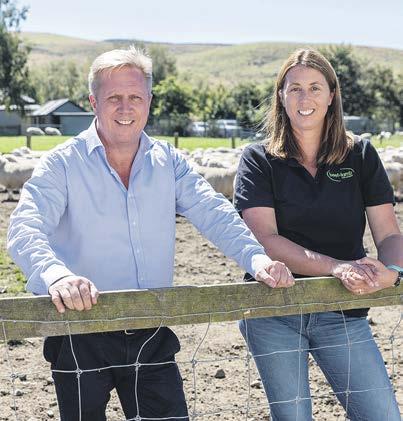
credits,” he said. “That ends under this government.”
The legislation will still allow farmers to plant trees on up to 25 per cent of their land.
“It will protect farmers’ ability to diversify while stopping blanket Emissions Trading Scheme planting that’s been gutting rural communities in places like the
East Coast,
“This policy is pro-farming, profood production, pro-commercial forestry and pro-rural New Zealand.”
The legislation is expected to come into force from October and restrictions would take effect retroactively from last December.
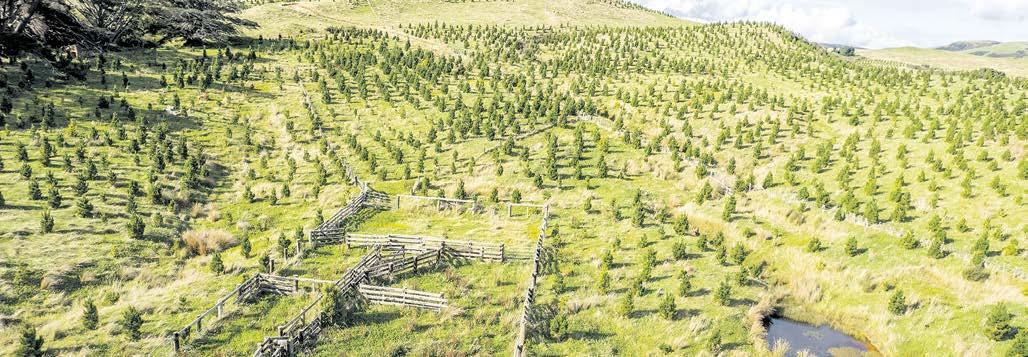

We are your trusted source for quality tractors and farm equipment.
We have got finance deals across the range — from compact machines, to the big horsepower gear that gets it done. Give us a call, or pop in for a yarn about what’s right for your setup.
Hamilton • 07 843 7237 Otorohanga • 07 873 6221 sales@waikatotractors.co.nz waikatotractors.co.nz @waikatotractors
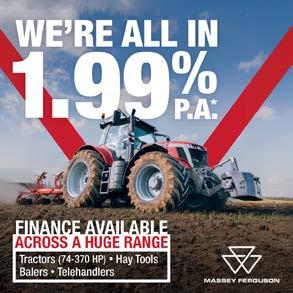


Wairarapa, the King Country and Southland.
Agriculture minister, Todd McClay and Beef and Lamb chair Kate Acland.
Farms nationwide are giving way to pine forests.
Across 1. Spanish rice dish (6) 5. Strain (6) 8. Pledge (3) 9. Courteous (6) 10. Sullied (6) 11. Flightless bird (4)
13. Salutation (8)
14. Leg bone (5)
15. Cruelty (5)
19. Cheat, con artist (8)
21. Reverberate (4)
Last week
22. Energy (6)
23. Categorically (6)
25.
St John Cambridge Health Shuttle
Providing transport to medical and health related appointments between Cambridge, Hamilton and return.
0800 846 9992
Bookings are required by 3.00pm the working day prior to appointment. Donations appreciated.



Safe Drive NZ
Across: 1. Scrub, 4. Addict, 7. Run, 8. Doddle, 9. Nation, 10. Slippery, 12. Reek, 13. Ledger, 15. Dredge, 16. Obey, 17. Punctual, 19. Salami, 20. Touchy, 22. Lie, 23. Heckle, 24. Donor.
Down: 1. Shoulder blade, 2. Red, 3. Breve, 4. Annoyed, 5. Detergent, 6. Choreographer, 11. Piggyback, 14. Reptile, 18. Noted, 21. Urn.
GNBOSSANOVAEKDPCTC VGGWMINUETEBYENPEH VOLTAZOLURLLTAGCHA EMIQTUBKESLSDANMOR LQMDUOGMAEKGBASORL ENBFDSOBBCOMDEAMNE TMOOISMIILADUHGAPS AQSRTUSUCSRQCNAMIT TARHRZQFROSAMDLBPO POGJFMLKWEHQBQOOEN MIWALTZSBCONGAPVYF ETWISTCANCANSHIMMY KLANCERSIQICEJFJIG TVAJCAQCAKEWALKELN
ARABESQUE BELLYDANCE
BOLERO BOSSANOVA CAKEWALK CANCAN CHA-CHA CHARLESTON CLOGDANCE CONGA EIGHTSOMEREEL FLAMENCO














Hautapu a step from the final
By Jesse Wood
Hautapu have secured a home Breweries Shield semi-final against University on Saturday, while Te Awamutu Sports ended their Waikato club rugby premiership season on a high.
After travelling to Hamilton, Hautapu dealt to Hamilton Old Boys 64-14 at Fred Jones Park.
Rangy lock Dylan Eti and Quentin Hill registered doubles in the 10 tries to two drubbing.
Others to cross the chalk were Quintony Ngatai, Waisake Salabiau, David Morris, Rui Farrant, Amos Faaola and Dallas RataMakene.
Conversions were added by Ngatai, RataMakene (4) and Dillon Martin (2).
Hautapu finished the round-robin in second place, registering 12 wins and a loss.
On Saturday they will host University at Cambridge Memorial Park.
Te Awamutu Sports beat Morrinsville 3312 in their final game of the season.
The home crowd witnessed try scoring efforts from Ethan Refoy, Connor Moore, captain Jake Russ, Leo Scott and veteran Brad Van der Heyden. Scott also added eight points off the kicking tee.
Sports finished the season in sixth place after six wins, six losses and a draw.
In the premier development competition, Hautapu B pipped Old Boys B 26-22 and Te Awamutu’s development side lost 22-12 to Morrinsville. Hautapu B’s season is over, as is Te Awamutu’s, after finishing fifth and 10th respectively.
Leamington and Pirongia were both beaten in the division 1A Mooloo Shield round,
Leamington were demolished 53-5 at home by Suburbs, who had the services of Hurricanes back Daniel Sinkinson and former All Blacks first five-eighth Lima Sopoaga.
Pirongia fell 38-17 to Hinuera at Wealleans Park.
Ōhaupō again had success in the 1A championship division, beating Te Rapa
33-17.
In Division 1B, all three Waipā teams had success.
Leamington B beat Suburbs B 26-24, Pirongia beat their Hinuera counterparts 2413 and Ōhaupō B defeated Te Rapa B 26-12.
Hautapu thumped Pirongia 74-10 in the under-21 competition, while Te Awamutu Sports beat Morrinsville under-21 28-25 and
Leamington lost 24-17 to Fraser Tech colts. Tane Barlow and Maraekaiti Nepia registered hat-tricks in Hautapu’s 12 tries to two victory.
Hautapu are the only Waipā under-21 side to advance as the semi-finals beckon this weekend. They will face Hamilton Marist. Te Awamutu finished ninth overall, Pirongia 10th and Leamington 12th.












Hautapu speedster Waisake Salabiau has certainly shown he knows his way to the tryline this season.
Photo: Matt Gould.
Leamington 49 Chaucer Street

$1,025,000 55 Alpers Ridge, Leamington
- Two Separate Living Areas – Versatile spaces ideal for relaxed family living, entertaining, or creating a dedicated media room.
- Kitchen – heart of the home, modern appliances and ample storage.

54 Norfolk Drive, Cambridge
- Five spacious bedrooms, including two with ensuites, walk-in wardrobes and direct access outdoors via double sliding doors.
- Sun-filled formal lounge plus second living space.
- Three bathrooms in total plus a separate toilet.

Kings Crescent ,
3 2 - Two-bedroom home + Large separate studio- refurbished, heat pump, kitchenette, bathroom, laundry and French doors. - Heat pump and fireplace for year-round comfort.
Homes Saturday & Sunday 12.00 - 12.30pm

Leamington
- Ideal choice for first-home buyers, small families or smart investors.
- Modern Bathroom with Fully Tiled Shower – Stylish finishes.
- Fully Refurbished Interior – Fresh, modern updates throughout.
- New Driveway & Soak Holes – Hassle-free access.
12.00 - 12.30pm




Eliot Place, Leamington - Set on a generous 794sqm (more or less) section. - Modernised kitchen & bathroom—fresh, functional & ready to enjoy. - Open plan lounge with a heat pump for year-round comfort. - Garage with workshop space gives you extra room for hobbies.
Homes Saturday 1 - 1.30pm Sunday 12 - 12.30pm







Prime Cambridge East Bungalow

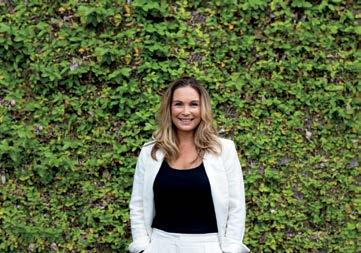



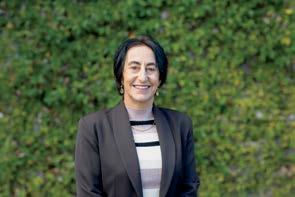

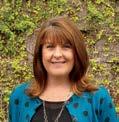












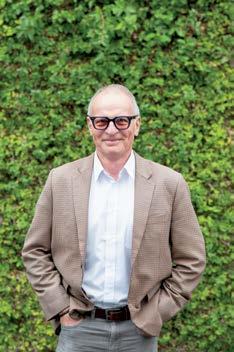







Residential Listings* Rural & Lifestyle Listings*

Contact
Contact
Contact Eilish, Amy, Kevin or Taylor
Contact Paulette
Contact Paulette
Contact
Contact Rachael
Contact Lenie
Contact Paulette
Contact Eilish, Amy, Kevin or Taylor
Contact Eilish, Amy, Kevin or Taylor
Market Appraisal

Contact
Contact
Contact
Contact
Contact Marisa Contact
Contact Eilish, Amy, Kevin or Taylor
Contact Taylor, Eilish, Amy or Kevin
Contact Eilish, Amy, Kevin or Taylor
Contact Graham
Contact Lenie
Contact Eilish, Amy, Kevin or Taylor
Contact Eilish, Amy, Kevin or Taylor
Contact Paulette
Contact Paulette
Contact Eilish, Amy, Kevin or Taylor
Contact Eilish, Amy, Kevin or Taylor
Contact Paulette
Contact Rachael

































































TERMS AND CONDITIONS
Advertising booking deadlines for Cambridge News, Te Awamutu News and King Country News is one week prior to publication day. Copy deadline for ad-make up is 5pm Friday prior to publication day. Advertiser is responsible to advise us of any copy changes before proofing deadline – anything not signed off by this time, ad prints as per the last proof sent. Advertising supplied in completed form (finished artwork or camera ready), deadline is Tuesday midday prior to publication day. Public holiday weeks, all deadlines move forward one working day. Cancellation deadline is one week prior to publication. If cancellations are received after the cancellation deadline, then full charge applies. All other publications and products see separate booking and deadline sheet. Advertising setting is free for up to two proofs, further changes will incur a production fee. Advertising copy set by Good Local Media Ltd is the property of Good Local Media Ltd and for use in Good Local Media Ltd publications only. If used elsewhere charges will apply, pricing available on request. If supplied ready to print, copy is owned by the advertiser. Publication day is Thursday for urban

deliveries and Friday morning for rural deliveries. Acceptance of advertising for publication and free productions services is at the discretion of the publisher.
RATE CARD: Rates are based on advertising space only and are over a 12-month period starting from the date the first ad publishes. Rate bracket e.g. 6 insertions, 12 insertions etc. chosen allows ad sizes to vary within the rate bracket. If the number of insertions chosen is not met then a bulk charge will be applied at the end/cancellation of your schedule based on correct rate reflective of the number of ads published e.g. if you have chosen the 12 insertion rate and only publish 6 insertions, the bulk charge will be the difference in price between the 6 insertion rate and 12 insertion rate multiplied by the number of ads published. You pay the rate reflective of the number of ads you actually publish.
INVOICING AND PAYMENTS: For advertisers on a regular schedule invoices will be sent at the end of the month and
with Jan Bilton
Breaking bread
Baking powder gives rise to perfect bakes. It’s a combination of baking soda (sodium bicarbonate), cream of tartar, and a filler such as cornflour or rice flour.
When mixed with a liquid in a bake, this raising agent releases carbon dioxide, and the rising of the dough commences. More carbon dioxide is released when heated, preventing the bake from becoming a brick. The filler helps control the rising speed, making the finished bake predictable.
Baking powder breads, or quick breads, are easy to prepare. Yeast-raised breads, which usually do not contain baking powder, are time-consuming and not something one would normally whip up for morning tea.
Butter is the traditional emulsifier (fat) in these quick breads. However, oil can be a substitute for butter. One advantage of using oil is that you don’t have to ‘soften’ it first. When substituting oil for butter, about 20 per cent less oil is required either by weight or measure. The texture may be a little different, but it is acceptable.
Tip: New Zealand recipes use level metric measures. A heaped tablespoon of baking powder in a recipe could change a cake’s texture, flavour and height.
Banana & pineapple loaf
The drained pineapple juice can be reserved for use in an icing for the loaf.
3/4 cup firmly packed brown sugar
2 medium eggs, lightly beaten
160g mashed banana (about 3/4 cup or 1 large banana)
1/2 cup sunflower oil
1 1/2 teaspoons vanilla essence
1 1/2 cups self-raising flour
1/4 teaspoon baking soda
1 1/2 teaspoons mixed spice
75g shelled pistachio nuts, chopped
225g can crushed pineapple, well drained (reserve the juice)
Preheat the oven to 180°C. Lightly oil a 4-cup loaf pan. Line the base with baking paper.
Using an electric mixer preferably, beat the brown sugar and eggs until light and fluffy. Add the mashed banana, oil and vanilla. Mix well.
payment is due by the 20th of the following month, otherwise payment is required by end of day Tuesday in advance of publishing. Accounts in arrears +60 days may be subject to a $95 + GST late payment fee per month. Advertiser is responsible for all debt collection fees. Cancellation deadline is one week prior to publication.
By confirming and placing advertising in Good Local Media Ltd publications you are agreeing to our terms and conditions of trade.
LIMITATION OF LIABILITY: Good Local Media Limited (including its employees, officers, or agents) shall not be liable for a failure or breach arising from anything beyond their reasonable control e.g. an act of God, fire, earthquake, strike, explosion, electrical supply failure, unavoidable accident or machine breakdown; and shall not be liable in tort, contract, or otherwise for loss of any kind (whether indirect loss, loss of profits, or consequential loss) to the Advertiser or any other person.
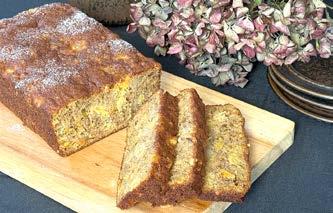
Sift the flour, baking soda and spice together and fold into the banana mixture. Add the pistachios and pineapple. Pour into the loaf pan.
Bake for 45-55 minutes or until a skewer inserted in the centre comes out clean. Cool for 10 minutes in the pan then turn out onto a wire rack. The top can be dusted with icing sugar or iced.
Cheese bread
Fabulous served with soup or a salad. Or toasted for breakfast.
1 small onion, diced
50g butter
2 cups plain flour
3 teaspoons baking powder
1 teaspoon salt
1 cup grated tasty cheese
1 egg, lightly beaten
1/2 cup milk
1/4 cup yoghurt
Preheat the oven to 200°C. Spray a 20cm x 10cm loaf pan preferably with rice bran oil.
Place the onion in a microwave jug with 1 teaspoon of the butter. Cover and microwave for 30-40 seconds until the onion is limp.
Sift the flour, baking powder and salt into a medium-large bowl. Grate the remaining butter into the flour mixture then rub in until smooth. Add the cheese and onion.
Beat the egg, milk and yoghurt together in a bowl. Mix into the flour until just combined. If it’s a bit stiff add a little more milk. Spoon into the loaf pan. Sprinkle with a little more cheese if




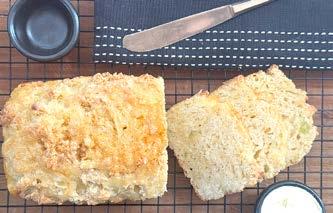
preferred.
Bake for 20-25 minutes, until a skewer inserted in the centre comes out clean. Best served warm and sliced. Or reheat in the microwave or toaster.
Spiced Pumpkin Bread
You need to purchase about 1kg of dry butternut or crown pumpkin. Ensure the mashed pumpkin is fairly dry.
2 cups mashed pumpkin
1 1/2 cups sugar
1 cup each: water, canola oil
4 eggs, lightly beaten
3 1/4 cups plain flour
2 teaspoons each: baking soda, ground cinnamon
1 teaspoon each: salt, baking powder
1/2 teaspoon each: ground nutmeg, ground cloves
Preheat the oven to 180°C. Lightly oil and flour two 23cm x 12cm loaf pans or similar.
In a large mixing bowl, combine the pumpkin, sugar, water, canola oil and eggs. Beat until well mixed.
Sift the flour, baking soda, cinnamon, salt, baking powder, nutmeg and cloves into a separate bowl. Stir to combine. Slowly add the dry ingredients to the pumpkin mixture, beating until smooth.
Evenly divide the batter between the two pans. Bake for 45-55 minutes or until a skewer inserted into the centre comes out clean. Cool for 10-15 minutes. Remove from the pans. Serve sliced. Makes 2 loaves suitable for freezing.
Banana & pineapple loaf
Cheese bread
PETERSEN, Rodney Kenneth (Rod) – Passed away peacefully at Eventhorpe Care Home
Hamilton, Tuesday, July 8, 2025, aged 80. Husband, dad and grandpa of Raewyn, Brenda, Kiely, Maiken and Erlend. At Rod’s request a private cremation and gathering has been held.

WALL UNIT – Harvey Norman cabinet. 2m high, 1m wide. Side opening doors. Glass front and shelves. Mirror back and downlights. $1500. Phone Paula on 07 823 4520.
WALL UNIT – Danske Mobler Strada cabinet. 1.8m high, 1m wide. Glass doors and shelves. Mirror back and downlights. $1500. Phone Paula on 07 823 4520.
AGM
Cambridge Community Garden Wednesday 30th July @ 7pm Waipa Council Building 23 Wilson Street, Cambridge
AGM
Karapiro-Taotaoroa Settlers Hall Inc Society At Hall 7pm Thursday 24 July. If you pay rates on this hall, please attend.
CAMBRIDGE VETERINARY CLUB INCORPORATED
Notice of Annual General Meeting
Notice is hereby given that the Annual General Meeting of the Club will be held on 25th July 2025 at 1.00pm at the Cambridge Vet Building corner of Alpha & Empire Streets, Cambridge ORDER OF BUSINESS
Adoption of Reports
Election of Officers
Re-Register under Incorporated Societies Act 2022 including new constitution to comply with the 2022 Act requirements General Business
Engagements
Weddings
Births
Anniversaries
Bereavements
In Memoriam etc

Janine 027 287 0005 or email janine@goodlocal.nz


Worship Service: 11.00am
Like us on Facebook: h�ps://www.facebook.com/cambridge.sda.9 email: cambridge.sda.nz@gmail.com


VEHICLES WANTED
CALF MILK

NB: If you have not already received a copy of the proposed constitution by email, please email a request to obtain a copy at office@shelleytweedy.co.nz



VEHICLES WANTED – We buy all cars, vans, utes, trucks, in any condition, dead or alive. Call 0800 333 398 or text 021 344 449






Fiona Speake Secretary
CAMBRIDGE HIGH SCHOOL
INFORMATION FOR PARENTS OF MIDDLE SCHOOL STUDENTS WISHING TO ATTEND CAMBRIDGE HIGH SCHOOL IN 2026
Enrolment packs will be available from Monday 14 July at: Cambridge Middle School reception, Cambridge High School reception, or Cambridge High School website www.camhigh.school.nz
CAMBRIDGE HIGH SCHOOL’S OPEN DAY Thursday 31 July from 4.00pm-6.00pm Tours starting from the Hall will be available over this time with a formal presentation by the Principal at 4.00pm, 4.45pm and again at 5.30pm.
This will provide parents/caregivers and students with an opportunity to meet the Principal and teaching staff, and be informed about our learning and co-curricular programmes. Enrolments for 2026 out-of-zone students will close on Thursday 21 August
All enquiries: Tel: 07 827 5415 Email: enrolments@camhigh.school.nz www.camhigh.school.nz
Boyds Asparagus is well established in the industry, and we have vacancies available for our upcoming season.
Based in Hautapu, Cambridge, we require seasonal workers who are hardworking, honest, reliable, and willing to work on a roster basis, including weekends. We have casual positions available in our packhouse for:
• LOADERS • GRADERS
The asparagus season runs from early September to 22nd December 2025.
Experience is not essential as full training will be provided.
Please email your interest along with your contact details to: admin@asparagus.co.nz

CIT Y WIDE C ROOF
CAMBRIDGE OPEN HOMES
Place a Garage Sale ad in the Cambridge News
Email text for ad (max 120 characters, including word spaces) through to admin@goodlocal.nz week prior to your garage sale day. Payment due Tuesday prior to garage sale day. Cambridge News is published on Thursdays.

Classifieds

Jobs, terrific bargains, useful services, legal notices and announcements –
in your newspaper’s classified ad section.
Connect to your neighbours in a proven reliable way.
When buyers and sellers need to connect…










No matter what your level of ACC funding, Resonate will fit you with the very best-quality hearing aids:
No matter what your level of ACC funding, Resonate will fit you with the very best-quality hearing aids:
ReSound’s Vivia 9. And you won’t have to pay a cent more than your ACC funding.
No matter what your level of ACC funding, Resonate will fit you with the very best-quality hearing aids: ReSound’s Vivia 9. And you won’t have to pay a cent more than your ACC funding.
ReSound’s Vivia 9. And you won’t have to pay a cent more than your ACC funding.
Only Resonate fits such high-quality hearing aids, in such a simple and straightforward way.
Only Resonate fits such high-quality hearing aids, in such a simple and straightforward way.
Only Resonate fits such high-quality hearing aids, in such a simple and straightforward way.
For our help to get you wearing the best hearing aid technology at no cost to you, give us a call, check out our website or visit one of our 29 local hearing health studios.
For our help to get you wearing the best hearing aid technology at no cost to you, give us a call, check out our website or visit one of our 29 local hearing health studios.
For our help to get you wearing the best hearing aid technology at no cost to you, give us a call, check out our website or visit one of our 29 local hearing health studios.
Contact Resonate
Contact Resonate
Contact Resonate
0800 327 360 resonatehealth.co.nz
0800 327 360 resonatehealth.co.nz
0800 327 360 resonatehealth.co.nz REGISTERED
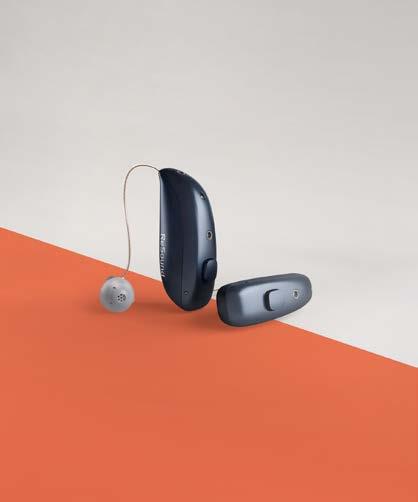

The best hearing technology ReSound Vivia 9™
technology

• The world’s smallest rechargeable, AIdriven hearing aid.
• The world’s smallest rechargeable, AIdriven hearing aid.
ReSound Vivia 9™
• No fiddly batteries to buy
• No fiddly batteries to buy
• The world’s smallest rechargeable, AIdriven hearing aid.
• Easy to fit and light and comfortable to wear
• No fiddly batteries to buy
• Easy to fit and light and comfortable to wear
• Easy to fit and light and comfortable to wear
• Four directional mics and AI processors manage background noise and help you focus on what you need to hear
• Four directional mics and AI processors manage background noise and help you focus on what you need to hear
• Connects with your other digital devices
• Connects with your other digital devices
• Four directional mics and AI processors manage background noise and help you focus on what you need to hear
• Connects with your other digital devices
